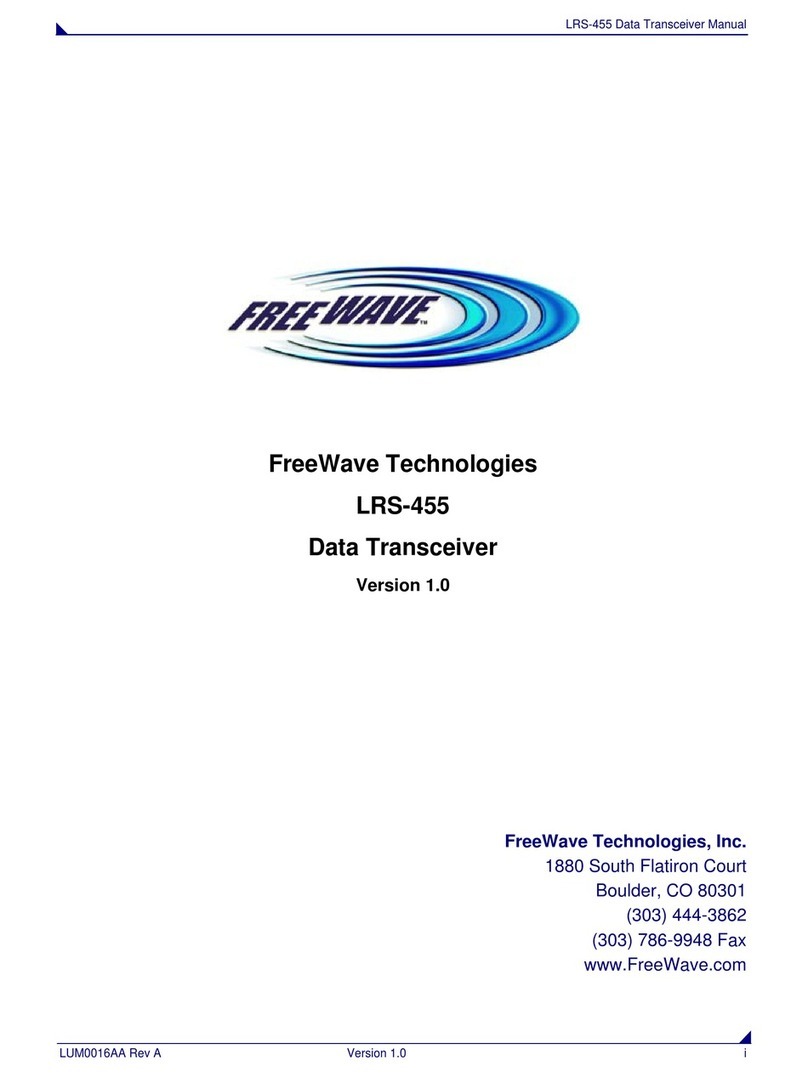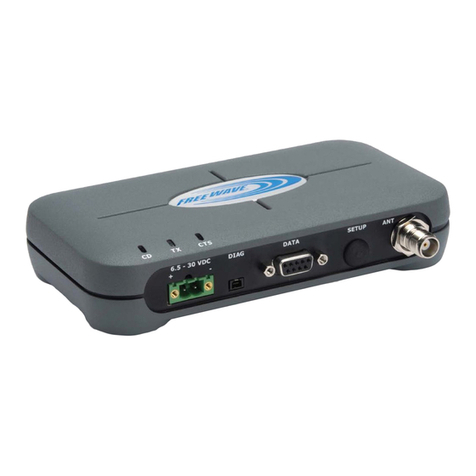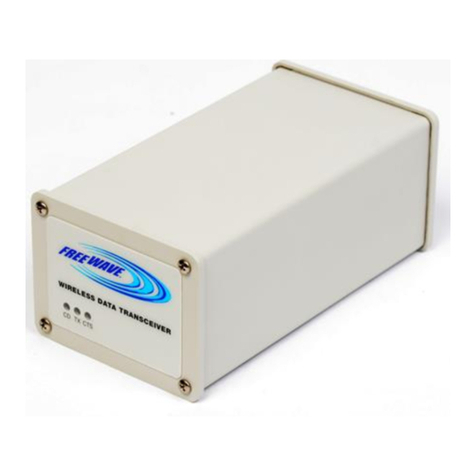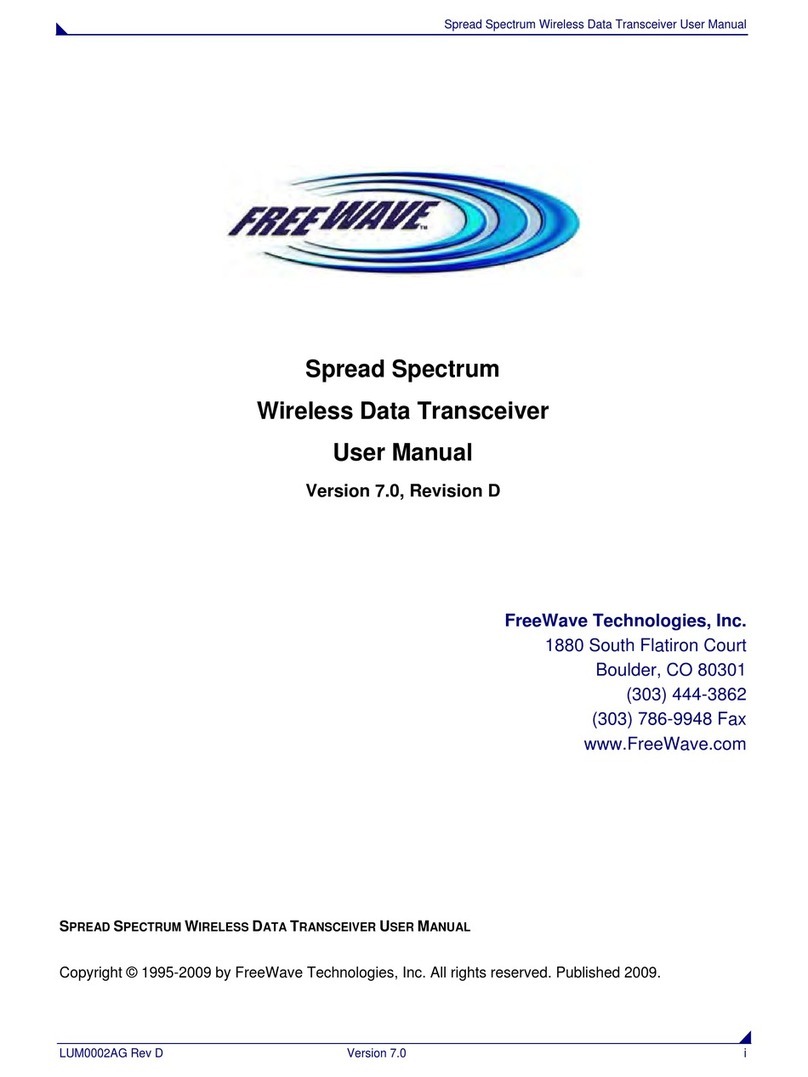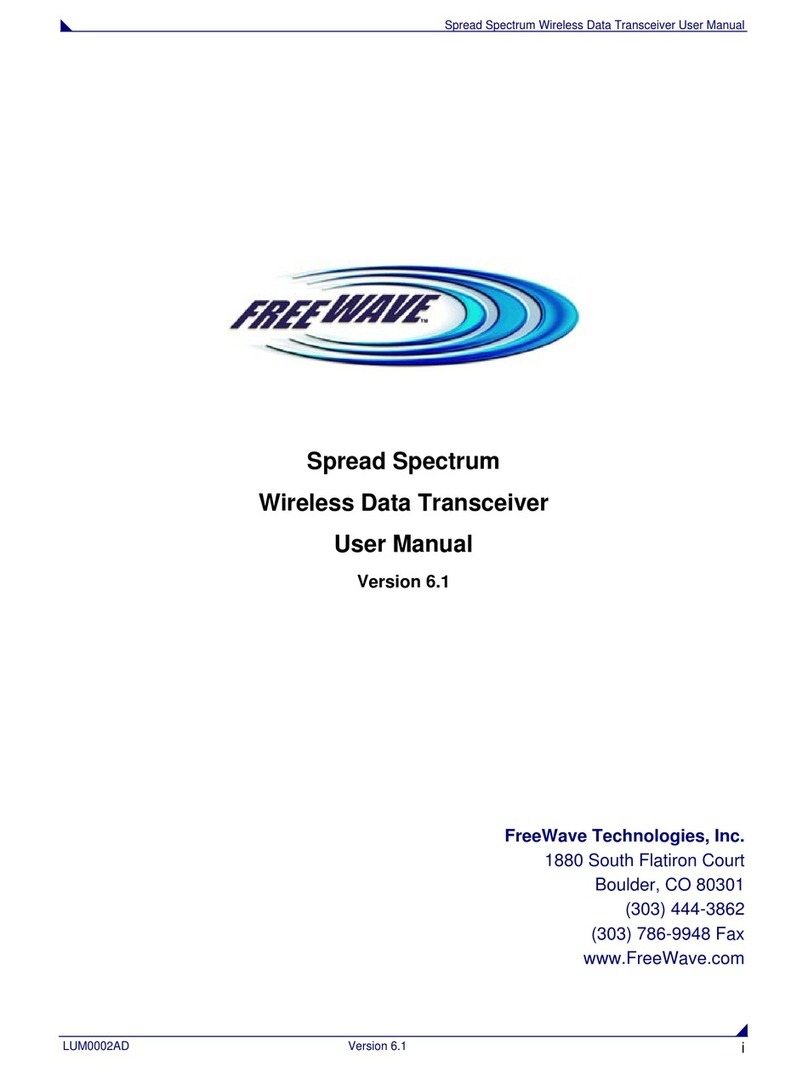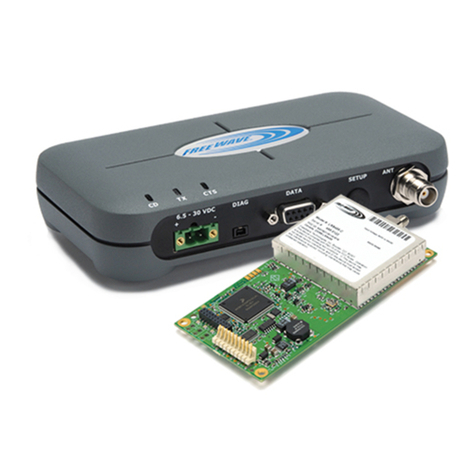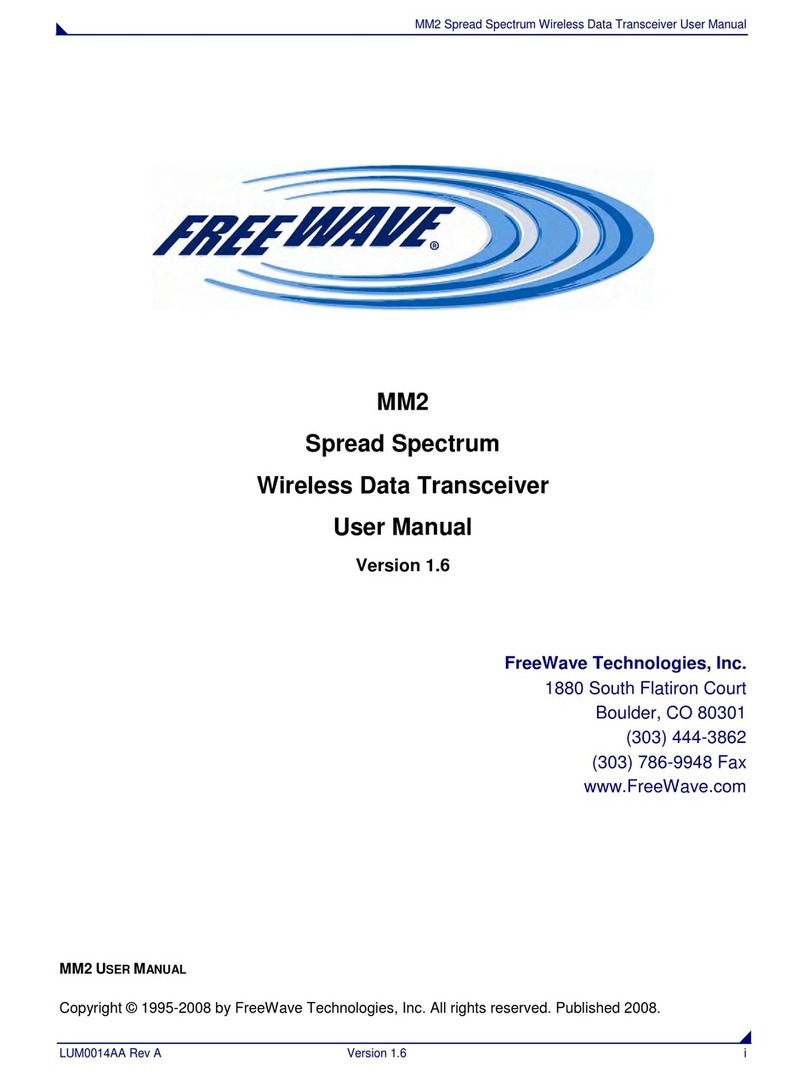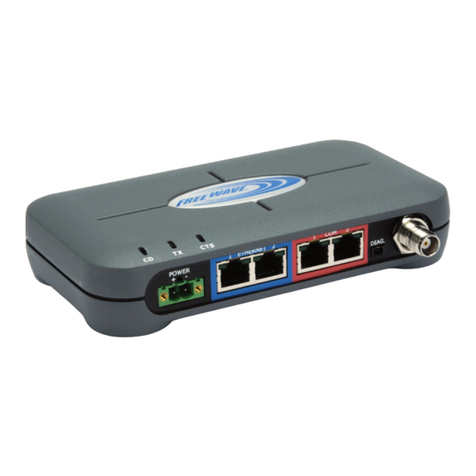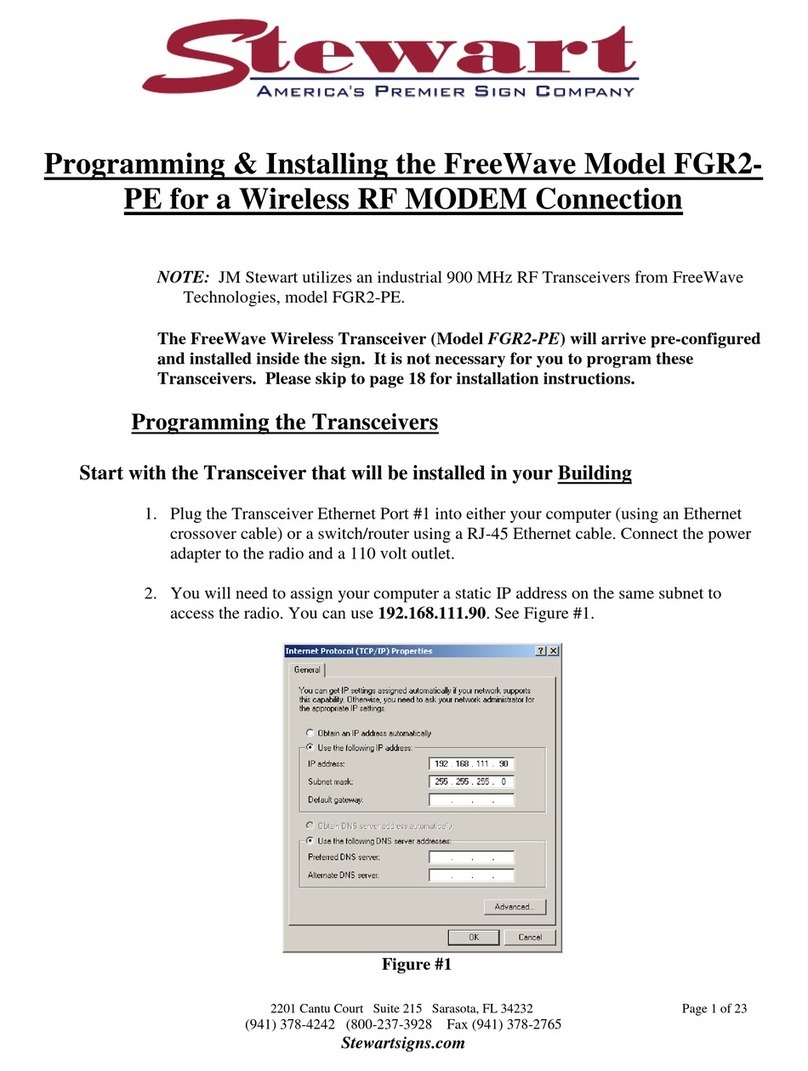
Spread Spectrum Wireless Data Transceiver User Manual
LUM0002AF Rev G Version 6.3 vi
(C) Remote LED ..................................................................................................................................................40
SHOW RADIO STATISTICS.........................................................................................................................................41
Number of Disconnects........................................................................................................................................41
Antenna Reflected Power.....................................................................................................................................41
Transmit Current (mA)........................................................................................................................................41
Average Noise Level............................................................................................................................................42
Average Signal Level...........................................................................................................................................42
Overall Rcv Rate (%)...........................................................................................................................................42
Radio Temperature..............................................................................................................................................42
MULTIPOINT PARAMETERS ......................................................................................................................................42
EDIT MULTIPOINT PARAMETERS..............................................................................................................................42
(0) Number Repeaters..........................................................................................................................................43
(1) Master Packet Repeat ....................................................................................................................................43
(2) Max Slave Retry.............................................................................................................................................44
(3) Retry Odds .....................................................................................................................................................44
(4) DTR Connect..................................................................................................................................................44
(5) Repeater Frequency.......................................................................................................................................44
(6) Network ID.....................................................................................................................................................44
(8) MultiMaster Synch.........................................................................................................................................45
(9) 1 PPS Enable/Delay.......................................................................................................................................45
(A) Slave/Repeater...............................................................................................................................................45
(B) Diagnostics....................................................................................................................................................45
(C) Subnet ID.......................................................................................................................................................46
(D) Radio ID........................................................................................................................................................47
(E) Local Access..................................................................................................................................................47
(G) Radio Name...................................................................................................................................................47
OVERLAPPING MULTIPOINT NETWORKS ..................................................................................................................47
PASSWORDS .............................................................................................................................................................49
SETTING A PASSWORD..............................................................................................................................................49
Changing a Password..........................................................................................................................................49
Disabling a Password..........................................................................................................................................49
TIME DIVISIBLE MULTIPLE ACCESS (TDMA)..........................................................................................................49
ADDITIONAL SETTINGS......................................................................................................................................50
LOW BAUD RATES....................................................................................................................................................50
SETUP TIMEOUT .......................................................................................................................................................50
FACTORY DEFAULT SETTINGS.........................................................................................................................51
EXAMPLES OF DATA COMMUNICATION LINKS.........................................................................................52
ADDITIONAL TRANSCEIVER INFORMATION...............................................................................................55
OPERATIONAL RS-422 AND RS-485 INFORMATION .................................................................................................55
RS-485 Half Duplex Pin-Outs..............................................................................................................................56
RS-422 and RS-485 Full Duplex Pin-Outs Waterproof Enclosure......................................................................56
RS-485 Half Duplex Pin-Outs..............................................................................................................................56
RS232 PIN ASSIGNMENTS ........................................................................................................................................56
FGRO RF BOARD PINOUT .......................................................................................................................................57
FGR-115WC WATERPROOF ENCLOSURE PIN OUT FOR CABLE ASC0613WW.........................................................58
900 MHZ TRANSCEIVER SPECIFICATIONS ................................................................................................................59
2.4 GHZ TRANSCEIVER SPECIFICATIONS..................................................................................................................61
OEM FULL SIZE BOARD LEVEL MECHANICAL DRAWING........................................................................................63
OEM MINI-BOARD LEVEL MECHANICAL DRAWING...............................................................................................64
FGR ERRATA DATA...............................................................................................................................................65
FREEWAVE TECHNICAL SUPPORT .................................................................................................................65

